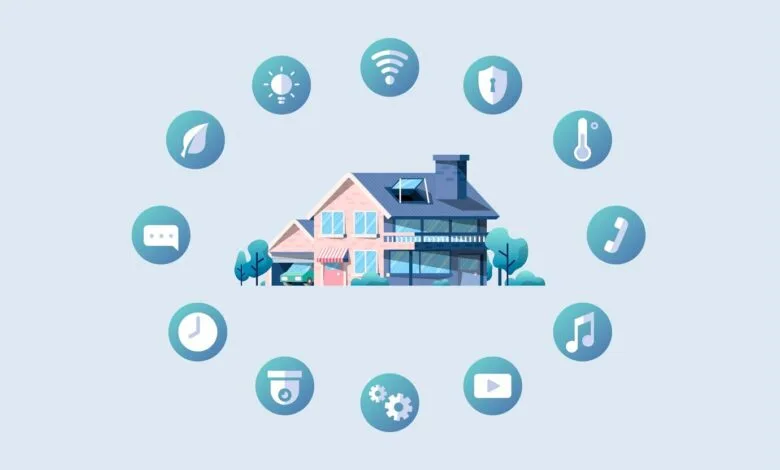
Introduction: A Glimpse into the Future of Smart Homes
Smart home technology has moved from being a futuristic concept to a reality that’s accessible to homeowners around the world. With innovations in home automation and connected devices, smart homes are transforming how we live, work, and interact with our environment. In this post, we’ll explore the trends, devices, and innovations that are shaping the future of smart homes in 2024.
As technology continues to evolve, your home will no longer just be a place to live – it will become a fully integrated, intelligent space that responds to your needs. From voice-controlled assistants to smart thermostats, the possibilities are endless.
1. Smart Home Assistants: The Heart of Home Automation
Smart home assistants like Amazon Alexa, Google Assistant, and Apple Siri have become the cornerstone of modern homes. These devices allow homeowners to control everything from lighting to security systems using simple voice commands.
In 2024, we can expect more advanced voice recognition features, seamless integration with other smart devices, and better responsiveness to context-specific commands. These assistants are evolving into truly personalized experiences, making it easier than ever to manage your home from anywhere.
Pros:
- Hands-free control of home devices.
- Integration with a wide range of smart devices.
- Time-saving automation for everyday tasks.
Cons:
- Privacy concerns with voice data.
- Potential for malfunction if not properly maintained.
Is it worth it? If you’re looking to automate your home and enhance convenience, investing in a smart home assistant is a great step.
2. Smart Thermostats: Energy Efficiency Meets Comfort
In 2024, smart thermostats are more efficient and user-friendly than ever. Devices like the Nest Learning Thermostat and Ecobee SmartThermostat allow you to control your home’s temperature remotely, set schedules, and even adjust based on your habits. These devices learn your preferences and optimize energy consumption, making them an essential part of any smart home.
Pros:
- Significant savings on energy bills.
- Personalized temperature control.
- Remote access via mobile apps.
Cons:
- Initial cost of installation.
- Integration issues with older heating systems.
Is it worth it? Absolutely. If you want to save money on energy bills and enhance comfort, a smart thermostat is a must-have for your smart home.
3. Smart Lighting: Ambiance at the Touch of a Button
Smart lighting systems, like those from Philips Hue or LIFX, are revolutionizing how we interact with our living spaces. With the ability to adjust brightness, color, and ambiance remotely or via voice control, these systems create the perfect environment for any occasion. In 2024, expect further advancements such as synchronized lighting, where lights respond to events such as music, movies, or weather patterns.
Pros:
- Customizable lighting for every mood.
- Energy-efficient LED bulbs.
- Remote control via mobile app or voice assistant.
Cons:
- Higher upfront cost for bulbs and hubs.
- May require a strong internet connection for optimal performance.
Is it worth it? If you’re looking to elevate your home environment and reduce energy usage, smart lighting is a great addition to your smart home setup.
4. Home Security Systems: Enhancing Safety with Technology
Smart home security is evolving rapidly with smart cameras, motion detectors, doorbell cameras, and security alarms. In 2024, expect even more AI-powered cameras that can differentiate between people, animals, and objects, reducing false alarms and enhancing surveillance.
Companies like Ring, Nest Secure, and Arlo offer solutions that can integrate seamlessly into your home. Many of these systems also include smart features such as facial recognition and two-way audio, ensuring that your home is protected at all times.
Pros:
- Enhanced safety with real-time alerts and surveillance.
- Easy to integrate into existing smart home systems.
- Remote monitoring via smartphone apps.
Cons:
- Privacy concerns with video surveillance.
- Possible false alarms if not set up correctly.
Is it worth it? For anyone serious about home security, a smart home security system is a great investment in both safety and convenience.
5. Smart Appliances: Revolutionizing Everyday Tasks
Smart appliances such as refrigerators, washing machines, and ovens are becoming increasingly popular in modern smart homes. Devices like Samsung’s Smart Fridge and Whirlpool’s Smart Oven allow you to control settings, receive maintenance alerts, and even monitor your appliance’s performance from your smartphone.
In 2024, these appliances will continue to offer more advanced features like automatic ordering of groceries or remote diagnostics to prevent malfunctions before they happen.
Pros:
- Convenience with remote controls and alerts.
- Improved efficiency and energy savings.
- High-tech features for everyday tasks.
Cons:
- Higher upfront cost.
- Dependence on Wi-Fi or a mobile app for full functionality.
Is it worth it? If you want to bring your kitchen and laundry room into the future, smart appliances are an excellent investment.
Conclusion: Embrace the Future of Smart Homes
2024 is the year where smart homes reach new heights of innovation and accessibility. With the rise of advanced smart devices like voice assistants, smart thermostats, and home security systems, transforming your home into an automated haven has never been easier. Not only do these devices enhance convenience and comfort, but they also improve energy efficiency and security.
To learn more about tech gadgets and how they can transform your life, check out our recent posts on Cloud Computing vs. SaaS Solutions and The Future of Artificial Intelligence in Business.




